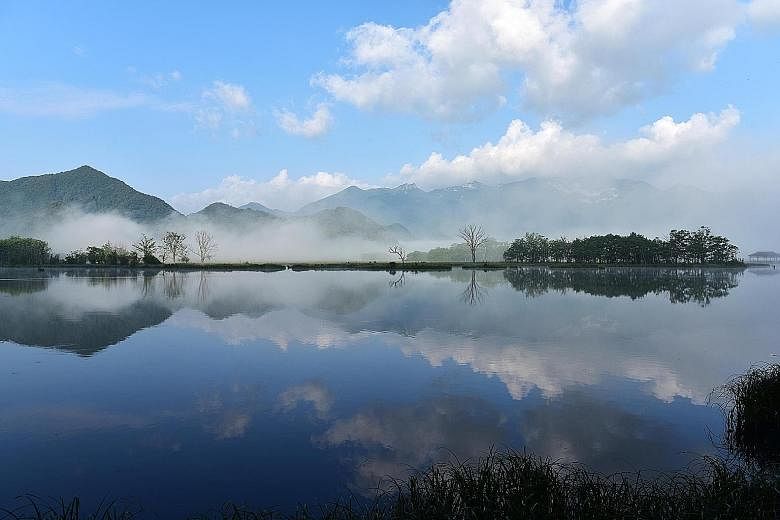ISTANBUL/BAGHDAD • The Shennongjia forests in China and Iraqi marshlands once ravaged by dictator Saddam Hussein have been named as World Heritage Sites, two of the latest 21 sites added to the prestigious list.
Shennongjia in Hubei province was chosen by UN cultural agency Unesco on Sunday, bringing the number of sites in China inscribed on the World Heritage List to 50.
It is regarded as a treasure of wildlife. A report cited at a meeting in Istanbul of Unesco's World Heritage Committee said: "Shennongjia has been a place of significant scientific interest particularly for botanists and the mountains have featured prominently in the history of botanical inquiry."
The committee's attention was, however, also drawn to potential tourism pressure on the site, where a new airport has already been built.
Mr Li Faping, mayor of the Shennongjia Forestry District, pledged better conservation for the area just like "caring for our own eyes".
Shennongjia's inclusion as a natural site came after China's Zuojiang Huashan Rock Art Cultural Landscape was placed on the list last Friday as a cultural site.
Meanwhile, Iraq was also rejoicing over the inscription of its marshlands on the Unesco list, a bright spot for a country where Islamic extremists have repeatedly sought to wipe out history.
The area named "is made up of seven sites: three archaeological sites and four wetland marsh areas", Unesco said.
"The archaeological cities of Uruk and Ur and the Tell Eridu archaeological site form part of the remains of the Sumerian cities and settlements that developed in southern Mesopotamia between the 4th and the 3rd millennium BC," it said.
"The Ahwar of Southern Iraq - also known as the Iraqi Marshlands - are unique, as one of the world's largest inland delta systems, in an extremely hot and arid environment," Unesco said.
Iraq has sought World Heritage status for the marshes since 2003, and Prime Minister Haider al-Abadi hailed Unesco's decision and thanked "all those who contributed to this success".
Mr Abadi also said that culture in the country will continue "despite the destruction and demolition of Iraqi heritage and antiquities by barbaric terrorist gangs".
He was referring to the Islamic State in Iraq and Syria's destruction of artefacts at the Mosul museum and the ancient cities of Nimrud and Hatra, the latter of which is a World Heritage Site.
The Unesco meeting ended on Sunday, cut short by three days due to the abortive coup in Turkey.
Among other sites added to the World Heritage List by the agency this year are the qanat water systems in Iran, the archaeological site of Nalanda Mahavihara in India, the Nan Madol ceremonial centre of mediaeval palaces and tombs in Micronesia and 17 works of Franco- Swiss architect Le Corbusier.
XINHUA, REUTERS, AGENCE FRANCE-PRESSE

